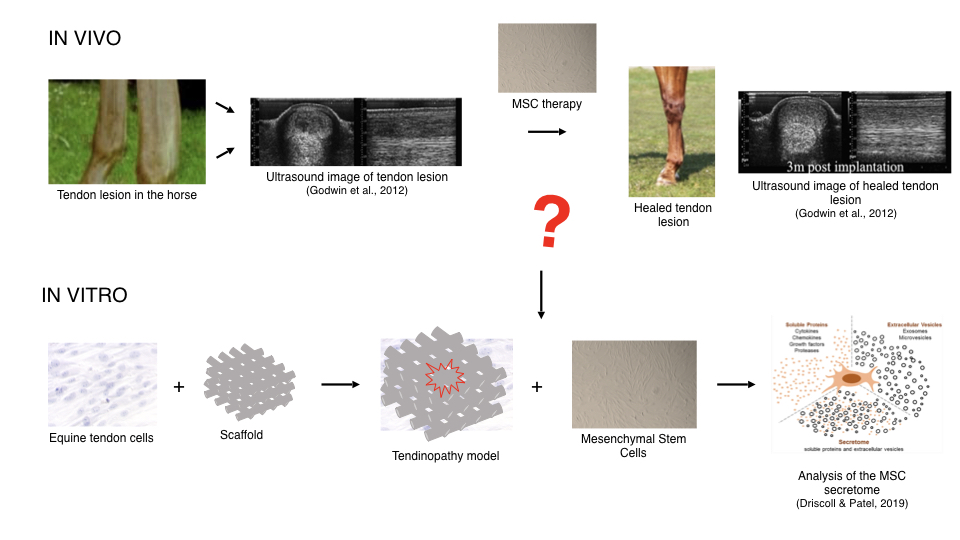Stem cells to treat tendon injuries
Injuries to the tendons of the equine distal limb are the most common orthopedic injuries in competition horses subjected to high-intensity exercise. These injuries often present significant challenges as tendons are hypocellular structures containing predominantly extracellular matrix. The poor success with conventional therapy supported the need to search for novel treatments to restore the functionality and regenerate a tissue as close to the tendon as possible. Stem cell-based strategies represent promising therapeutic tools for tendon repair and regeneration.
However, the translation of MSC-based tissue engineering strategies from basic research findings into clinical use has been hampered by the limited understanding of MSC mechanisms of action. So, it is mandatory to slow down the pace of clinical experiments and first focus on the molecular and cellular mechanisms of MSC regenerative functions in vitro before establishing treatments in vivo. To this end, controllable and reproducible in vitro conditions should be provided.
Therefore, it is imperative to design a physiologically representative in vitro tendinopathy model. Unfortunately, no generally accepted in vitro model or standard tenogenic differentiation assay exists for the moment. In this research project, we will focus on the development of a superior 3D in vitro equine tendinopathy model to study the healing mechanisms of MSCs in tendon injuries and investigate cell responses (Figure 1). This research is performed in collaboration with the Faculty of Sciences (Ghent University).

Figure 1. A beneficial effect is observed when mesenchymal stem cells (MSC) are used to treat tendon lesions in the horse. However, the exact mechanism of action of these MSCs is not known yet. To this end, the active components of the MSC secretome should be analyzed in vitro.
